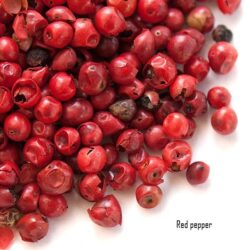Touted often as the “Destroyer Of Weakness” by Ayurvedic practitioners, Shilajit is one such herbo-mineral or Rasaoushadhi that has remained a crucial component in the process of healing since centuries. Sanctified with powerful adaptogenic and aphrodisiac properties, Shilajit or Asphaltum as denoted in English is not only used for managing stress and anxiety but also plays a significant role in treating conditions like dysuria, glycosuria, breathing disorders, urinary disorders, kidney stones, oedema, skin diseases, phthisis, piles, anaemia, epilepsy, mental disorders, and worm infestation. The main function of Shilajit is to regulate and improve the functions of the thyroid gland.
What Is Shilajit?
Shilajit is an astonishing sticky tar-like resinous substance that is neither completely plant nor of animal origin. In nature, Shilajit is a type of mineral pitch that is made up of humus and decomposed plant remains, exuded from the rocks present in the Himalayas at an altitude of 1000 to 5000 metres above sea level.
Ancient ayurvedic scriptures detail that in the summer months of Jeshta and Ashada, the mountains get heated up due to the direct sun rays melting the layers of mountain and yielding a resin-like semisolid liquid substance known as Shilajatu. But originally, several million years ago, when the Indian subcontinent collided into the Asian continent, the Himalayan mountains were formed crushing and trapping the tropical forests in between the huge boulders. When these components got pressed between massive layers of rocks for millions of years, they were converted into a tar-like gummy substance that may be black, brown or white in colour, and look like asphalt. Whenever there is a crack in the rock due to excessive heat, the material oozes out of it and settles itself on the rocks. The exuded herbo-mineral, known as Shilajit is rich in minerals and nutrients and has an abundance of bio-active humic and fulvic acid. These are found in high altitude mountains of Kashmir, Bhutan, Japan, Gilgit and Tibet.
Common Names Of Shilajit:
Shilajit is usually known as Asphaltum, Black Bitumen, or Mineral Pitch in English. Other names that refer Shilajit in Ayurveda in other states within India includes Silajat, Shilajatu, Silajatu, Kanmandam, Saileya Shilaja, Moomie, Moomiyo, Punjabinum, Memiya, Shiladhatuja, Adrija, Shilasweda, Shilaniryasa, Asmaja, Asmajatuka, Shilamaya, Girija, Gaireya.
Ayurvedic Indications Of Shilajit:
Ayurveda, the holistic science of herbal remedies has extensively mentioned the use of this time-tested compound multiple times in several ayurvedic scriptures and journals of Charaka and Susruta. It is mostly indicated for use in the following conditions which include, Prameha (manages diabetes), Mehahara (treats urinary tract disorders), Rasayani (rejuvenates the whole body), Medhya (improves intelligence), Balya (improves muscle strength), Deepana (enhances stomach fire), Pachana (helps in digestion), Rochana (stimulates appetite), Vamana (prevents nausea and vomiting), Shonitasthapana (prevents bleeding), Pandu (treats anaemia), Varnya (improves complexion), Kshayajit (treats tuberculosis), Vayasthapana (prevents ageing), Jvara (useful in fever), Anulomana (improves breathing), Kasahara (Relieves cough, Shwasha (relieves breathing difficulties), Amahara (treats indigestion), Dahahara (relieves burning sensation), Trutahara (relieves excessive thirst), Gulmajit (useful in abdominal tumours), Hikkanigrahana (controls hiccups), Kantya (relieves sore throat), Triptighno (relieves pseudo-satiation), Hridaya (treats heart problems), Krichra (treats painful micturition), Chakushya (treats eye problems), Garbhaprada (treats infertility), Vamanopaga (treats emesis), Sangrahini (treats diarrhoea), Kustha (treats skin disorders), Kamala (prevents jaundice), Krimihara (relieves intestinal worms), Kanthya (improves voice), Arsha (treats piles), and Pushtida (good for nutrition).
Chemical Composition of Shilajit
The conformation of this essential mineral compound is basically influenced by attributes such as the type of plant-species involved, the geological nature of the rock, surrounding temperature, altitude and humidity of the particular region.
Shilajit usually comprises of 60-80% organic matter, 20-40% mineral matter and 5% of trace elements. Several reports and scientific data suggest that it contains around 80 bio-active components including fatty acids, benzoic acid, hippuric acid, resin and waxy materials, albuminoids, gums, and vegetable matter. Being a Phyto-complex, Shilajit mainly contains (60 – 80%) of humus substances like humins, humic acids and fulvic acid. Additionally, it also contains triterpenes, sterols, ichthyol, ellagic acid, resin, aromatic carboxylic acid, 3, 4-benzocoimiarins, amino acids, phenolic lipids, minerals like silica, iron, antimony, lithium, manganese, calcium, copper, molybdenum, phosphorus, sodium, zinc, selenium and small amounts of dibenzo-α-pyrones (metabolites derived from plants, fungi, animal faeces or mycobionts). But the curative and therapeutic properties of Shilajit mainly comes from the presence of fulvic acid that helps in treating a wide range of conditions.





Reviews
There are no reviews yet.